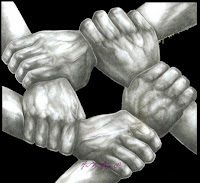"Throughout the pre-Civil War era, African Americans helped themselves to literacy in provocative and creative ways (M. Davis 1981:266) [...]"(152). In the text Going Against The Grain by Jaqueline Royster, there is a subsection entitled "The Doors of Opportunity". This section of the text gives readers an idea of how African Americans went about becoming literate after the Civil War.
In this text, Royster sheds light on an energy to learn within the African American people of the post-Civil War era. According to the text, this energy was “cycled” by the Sabbath School Movement, the Missionary School Movement, and the Community or Public School Movement.
Sabbath schools were church sponsored, community run schools. African Americans would run these schools in their communities. The basic literacy African Americans taught in these schools made them responsible for the foundation of literacy in their communities.
 The missionary school movement stemmed from northern church and community organizations’ efforts to intensify their mission activities which urged freedom, justice, and empowerment. The missionary school movement was a dominant educational avenue for decades.
The missionary school movement stemmed from northern church and community organizations’ efforts to intensify their mission activities which urged freedom, justice, and empowerment. The missionary school movement was a dominant educational avenue for decades. Southern leaders went about heightening their authority by supporting the education of African Americans. These southern leaders made efforts to reduce the influence of northern liberals such as those missionaries who urged freedom, justice, and empowerment, by establishing public schools which gave African Americans ways other than the missionary schools to gain opportunities for education. Recognizing how a literate African American population may positively affect the economy, these leaders still did not agree with the idea of African Americans having a northern culture and getting rid of the southern culture which they thrived on. These public schools were geared toward an industrial education and against liberal arts education.
African Americans have been taking advantage of every opportunity to gain literacy all throughout their experience in America. We, African Americans as a people, are capable of many things in terms of education. Taking advantage of educational opportunity is not as common as it once was. The energy Royster mentions in the text must be embodied again in the African descended people of American society today. Especially now, literacy can be obtained in so many ways that hopefully, African American people will find the energy to learn again.
--Asya Ziyad
--Asya Ziyad






